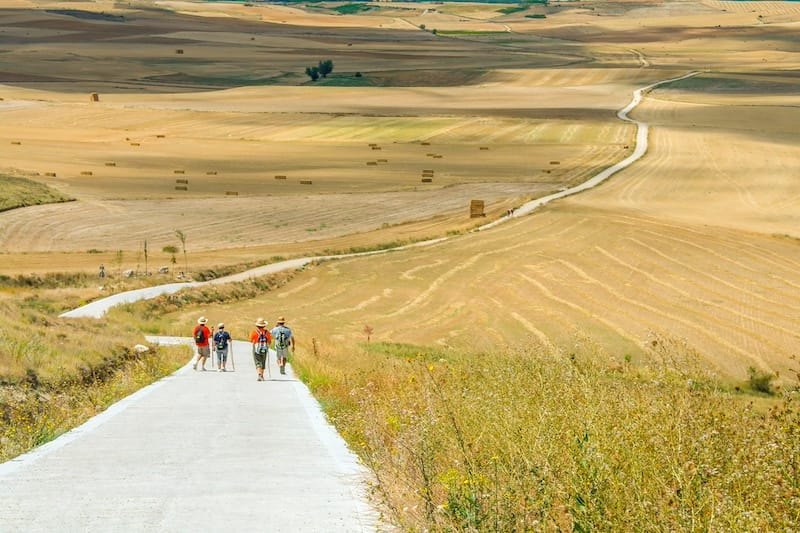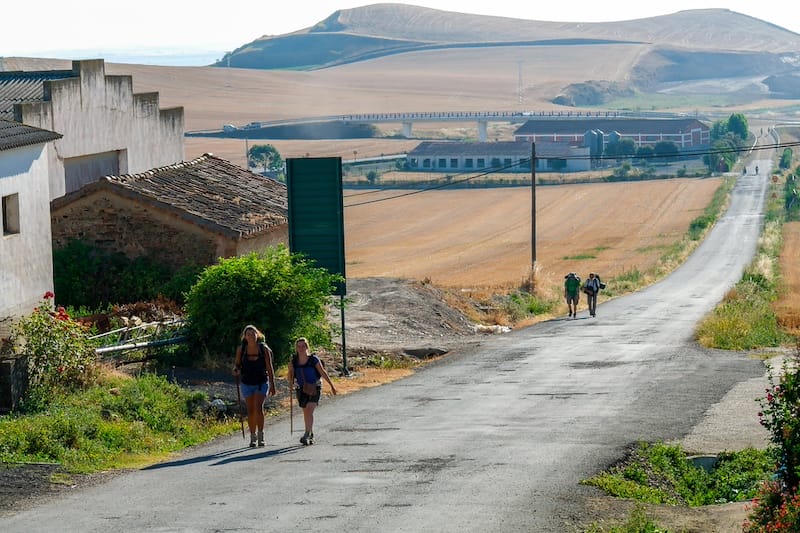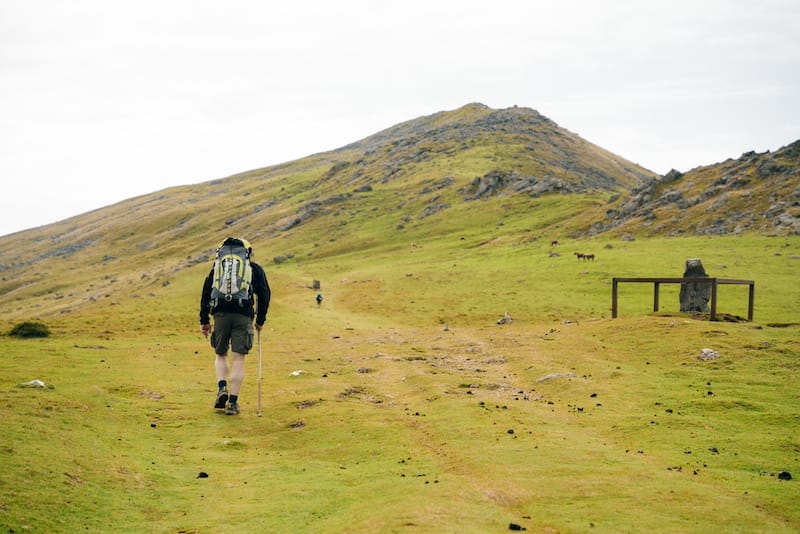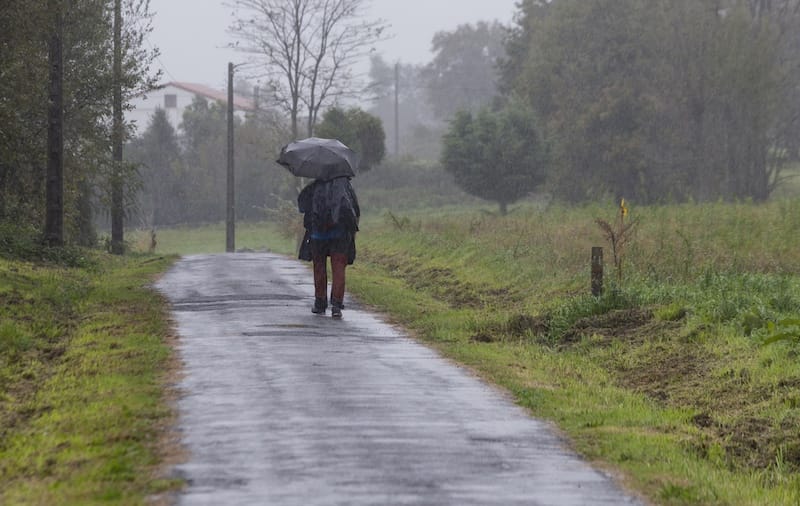The origins of the Camino de Santiago, which is also known as the Way of St. James date back to the 9th century and have grown into an incredibly popular journey that’s experienced by millions of not only pilgrims but also tourists.
It’s one of the most popular pilgrimages in Europe and for many good reasons, it offers several different routes that are suitable for different people and you get a unique opportunity to experience Spain, packed with picturesque towns and landscapes.

Table of Contents
Historical Significance and Spiritual Importance
The origins of the Camino de Santiago date back to the 9th century, when the tomb of St. James was discovered in what is now Santiago de Compostela.
The pilgrimage gained immense popularity during the Middle Ages, attracting pilgrims from across Europe.
Today, it remains a powerful symbol of faith, self-discovery, and community.
Why Walk the Camino de Santiago?
The Camino de Santiago started as a spiritual quest, but it has grown to be a lot more than that, it’s more than a hike and more than a route, it’s a physical challenge and cultural tradition.
The fact is, it’s an activity enjoyed not only by pilgrims but also by tourists and adventure seekers. Whether it’s your choice, remember to stay respectful.
Here are some of the common reasons people will give you along the way::
- Spiritual Quest: Many pilgrims decide to do the Camino as a spiritual quest. Whether seeking answers, solace, or a deeper connection with the divine, the journey provides a unique opportunity for introspection and personal growth.
- Physical Challenge: Walking hundreds of miles across diverse landscapes like mountains, forests, plains, and charming villages. Tests both physical endurance and mental resilience.
- Cultural Immersion: Along the way, you get the chance to experience| local traditions, art, architecture, and food.
- Community: The Camino is unique, you will notice the sense of camaraderie among pilgrims, sharing a laugh, meals, conversations, and even a place to stay.

Camino de Santiago Routes
Before embarking on this amazing journey, you should know that there are several different ways to do it, and by that I mean there are at least 9 different Camino de Santiago routes, starting from a bunch of different cities, towns, and countries.
It’s essential to understand and choose the right route, that way you enjoy and get the best of the experience. Remember this is a physical challenge, even if you do it for religious purposes.
The Camino Francés is the most famous and longest route, spanning approximately 500 miles. However, there are other options, each with its own uniqueness:
Camino Francés (Largest Route)
The French way is by far the most popular, it starts in Saint Jean Pied de Port, France, and this route takes you through the Pyrenees, and into the lush green landscapes of Galicia.
It’s a journey of contrasts, from rugged mountains to charming villages.
Overview
- Start: Jean Pied de Port (France)
- Length: 764 km
- Traverse picturesque French villages and lush landscapes.
- Cross the Pyrenees mountains.
- Visit historic towns like Pamplona, Burgos, and León.
Tip: If you don’t want to take the whole French way, you still can join it from other cities like Pamplona, this is also a popular way to do it, you’ll find people joining the Camino de Santiago from different towns along the way.

- Read next: Best Things to Do in Paris for First-Timers
Camino Portugués (Mid Route)
This one starts in Lisbon, Portugal, this route takes you through picturesque towns, vineyards, and coastal paths. It’s a quieter alternative to the Camino Francés.
Overview
- Start: Lisbon
- Length: 620 km
- Coastal sections with stunning ocean views.
- Explore Porto, Vigo, and Redondela.

- You may also like: Best Hikes in the Algarve
Camino del Inglés (Shortest Route)
Starting in Ferrol, Spain, this route follows an ancient road. It’s known for its historical significance and vast open spaces.
Overview
- Start: Ferrol / Coruña
- Length: 119 km
- Short but scenic route along the northern coast of Galicia.
- Connects with the French Way in Santiago de Compostela.
- Images from Depositphotos
- Book Your Flight Find deals on airlines on my favorite search engine: Skyscanner. Be sure to read my How to find cheap flights article.
- Rent A Car Rental Cars is a great site for comparing car prices to find the best deal.
- Book Accommodation Booking.com is my favorite hotel search engine. But Hotels.com and Hilton Hotels have very interesting reward programs.
- Protect Your Trip Don’t forget travel insurance! I always use World Nomads for short-term trips and SafetyWing for long-term ones. Find out why Travel Insurance: Much More Than a Precaution, a Necessity.
- Book Tours in Advance Book unforgettable experiences and skip-the-line tickets with GetYourGuide or Viator .
- Book Ground Transportation BookaWay offers a stress-free experience with secure payments and no hidden fees. You pay online and receive your itinerary by email.
- Luggage Solutions Rent your luggage with Cargo or if you need to drop off your own luggage and enjoy your time without dragging it all over a city, find a LuggageHero shop here.
- Get a Travel Card Revolut Card is a pre-paid debit card that enables cash machine withdrawals in 120 countries. I’ve been using my Revolut Card for over a year and never paid foreign-transaction fees again. Get your Revolut Card with free shipping here.
- Packing Guide Check out my How to Pack a Carry-on Luggage For a Five-month Trip to help you start packing for your trip. Don’t forget your camera, chargers and other useful travel accessories. World Nomads provides travel insurance for travelers in over 100 countries. As an affiliate, we receive a fee when you get a quote from World Nomads using this link. We do not represent World Nomads. This is information only and not a recommendation to buy travel insurance.
